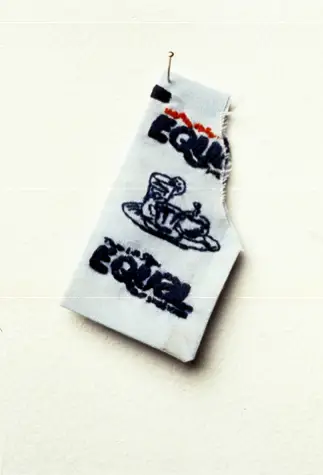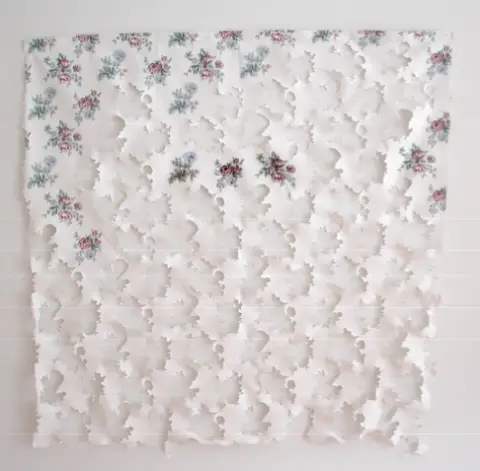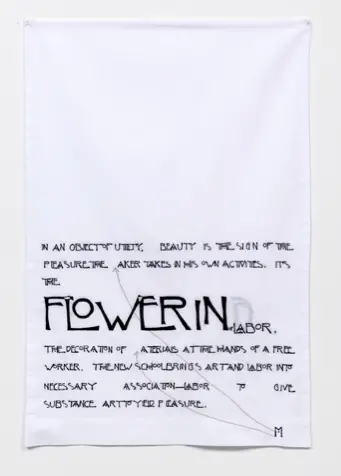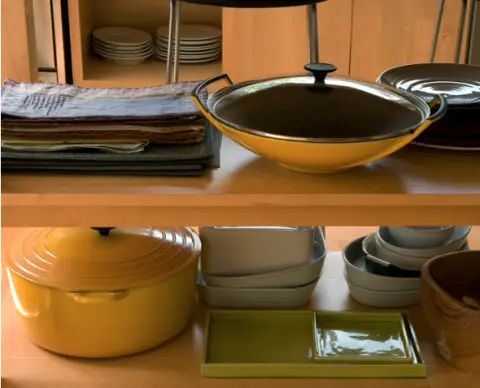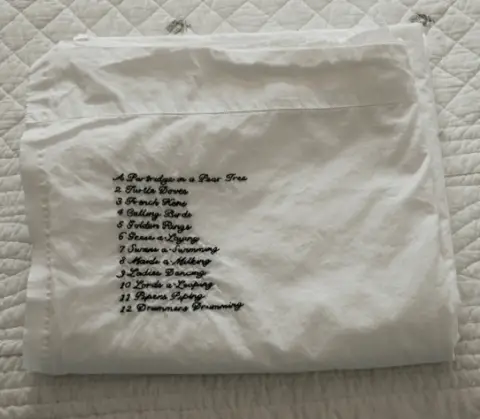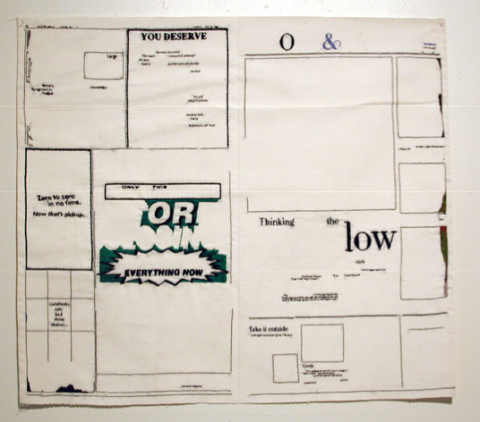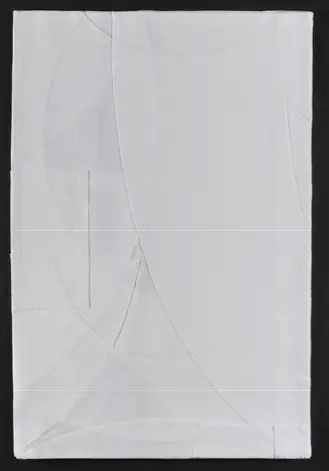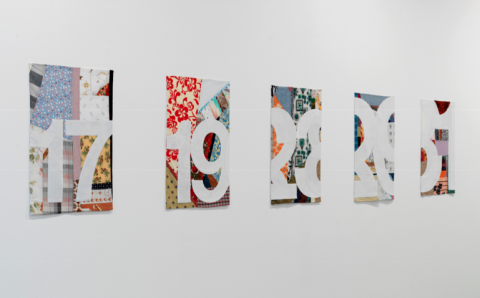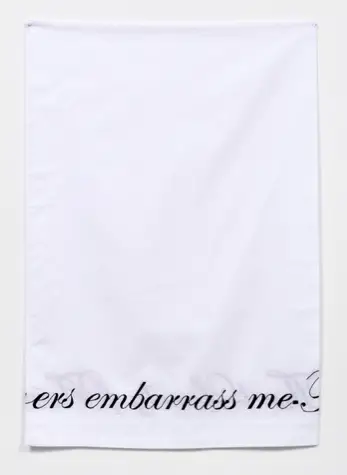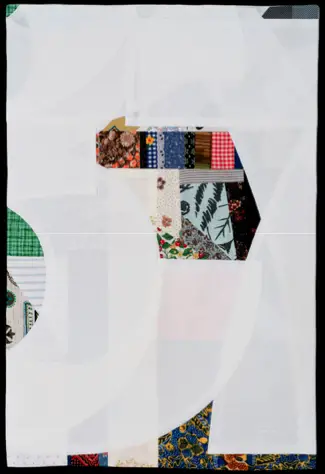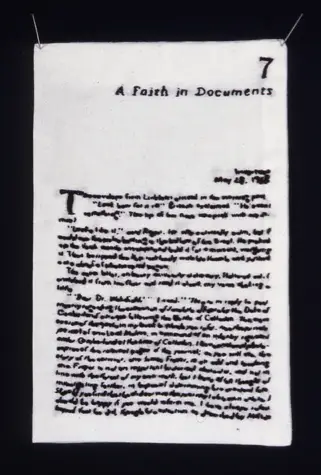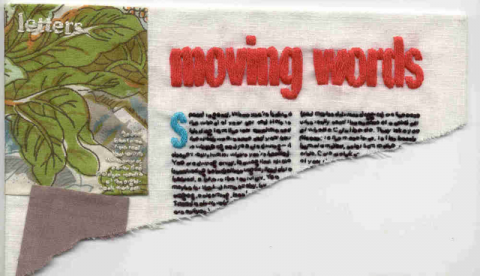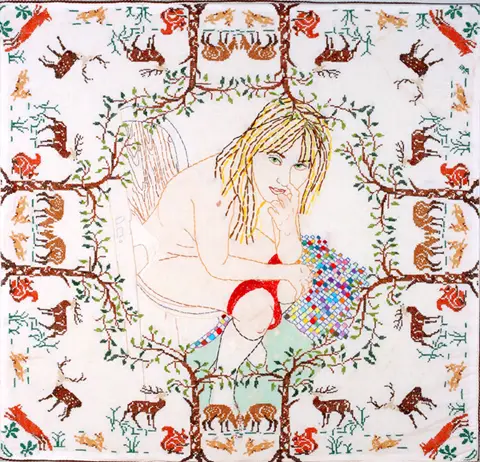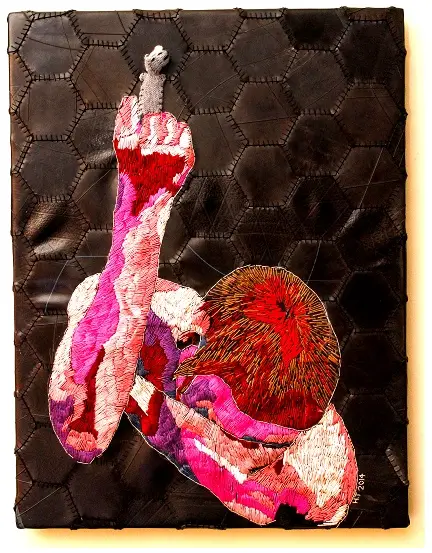
Welcome to Future Heirlooms, where we interview textile artists and explore creativity and technique.
I do not remember the first time that I saw the embroideries of Karen Reimer but I do know that it stuck in my head. The first work I saw of hers, now considered older work, was the image of a carefully crafted and hand-made torn Equal bag. Its reverence to the banal, its attention to detail and labor, the tear of the paper. I would often look her up again to see what she was up to and now with an up to date website I see that she has been up to much. I was inspired and moved by her project, twelves, which she discusses in the interview. This piece resonates so much with me and how the banal objects, moments, and lists of our lives and relationships are the most important. Her work has a simultaneous simplicity and complexity. Her methods of working both free and structured. I find this interview a wonderful insight into an artist whom with each project she does inspires me more. As you will see in the interview, Karen is a very thoughtful, intelligent and poetic artist. Enjoy.
Where do you live? Does this affect your work or life as an artist?
Chicago. It’s a good place to be an artist if your practice is a bit off the beaten path. Artists here complain about the lack of a market, of course, but the silver lining of that is they can take bigger risks. I think maybe Chicago’s historical connections to the Arts and Crafts Movement and later the Bauhaus, and maybe its general working-class gestalt, makes it more interested in ideas around craft and decoration. And importantly, The School of the Art Institute of Chicago has for many years now had a very forward-thinking Fiber and Materials Studies Department, it was way ahead of the curve in terms of the current art world discourse around craft and materiality. The community that’s developed around that department makes Chicago a great place to do the kind of work I do.
(Full disclosure: I do graduate advising for the SAIC FMS Dept.)
If you had to describe your work in 3 words, what would they be?
Can I have hyphens? How about craft-based, concept-driven, and labor-intensive
What is your background/education as an artist?
I have an MFA from the University of Chicago, but I didn’t study craft and/or fiber while in school. I learned craft skills as a child from my mother, but didn’t start using it in my artwork until several years after grad school.
Tell us about your current body of work?
My most recent work is a series of embroidered pillowcases titled The Domestic Partnership of Heaven and Hell, a reference to William Blake’s The Marriage of Heaven and Hell, which I admire for its complicating approach to dualities. [image from series above] Combining the tactics and aesthetics of conceptual art with the tropes of domestic decoration, I exchange the imagery of stylized nature that is typical of domestic decoration for language/words. Starting with the literalism of replacing the image of flowers with the word “flowers”, I embroider quotations in which that word appears onto pillowcases. The arrangement of the quotations on the pillowcases borrows equally from the traditions of embroidered pillowcase decoration and the formatting of language on computer screens.
How did you come to making this body of work?
I did a commissioned piece, titled Twelves, in which I embroidered words onto the existing household linens of the couple that commissioned the work. After I embroidered them, the linens were then replaced in the home in their former places among the kitchen and bath towels and bed and table linens, etc. These artworks/linens can be used or not, as the owners choose, maybe when they come across them in their stack of sheets or napkins, they use them, or maybe they put them back into the pile but in any case, they are not placed on walls to be contemplated visually, but rather to be periodically found and handled. This project got me interested in making things that could live in people’s houses in a way that created a different experience of, or a different way of relating to art to touch it, possibly use it, to have it be around you constantly but not always visible.
I also really like the idea of making artwork for a very small and specific audience, just a few people or even one person, who experience it privately at home. The couple who commissioned the piece were twelve years apart in age, so I embroidered lists of twelves the months of the year, the Twelve Days of Christmas, the twelve-tone musical scale, etc.onto their household things. The piece really only makes sense in the context of their relationship/their home.
How does working with embroidery affect the conceptual aspect of your work?
Doing embroidery, to some extent, is the conceptual content of my work. I use embroidery to exploit the tensions between body and mind, object and process, and fine art and domestic craft, to examine the relationships between beauty, value, and meaning. I’m particularly interested in how the amount of manual work invested in an object affects our judgment of which category it fits into and to what degree it possesses those related qualities.
I use embroidery because it is labor. It’s physical work. There is nothing mysterious about it. If you are patient and careful, you can do it. People untrained in art can see how it is done and imagine doing it. There are objective standards of good craftsmanship. It is anti-heroic genius is not embodied in the gesture when you work with needle and thread.
I use embroidery because it is handwork. I think that our brains and hands are as directly connected as our brains and eyes are, that working with ones hands makes it possible to learn and conceive of things that are not possible to learn/conceive by looking. I would like to break down the distinction between mental work and physical work.
I use embroidery because its slow. I think that the repetition of a small hand gesture for long periods of time, with only small results occurring, changes my experience of time. It slows it way down. Making things with stitching is cumulative…
I use embroidery because of the ways it’s associated with the Low with craft, decoration, useful objects, femininity, unsophisticated taste, the homemade. The kind of decoration and craftwork that I’m referencing is not high interior design. It’s made by amateur craftspersons for their personal homes or the homes of people they know.
Often you work from very banal almost detritus objects, what is the purpose of recreating these in such a labor intensive way?
The trash embroideries are somewhat older work–they were done in the mid-late 1990s. I copied trash in cloth and embroidery to attempt to isolate the value of the work and craftsmanship. My thinking was that if the object copied gum wrappers, junk mail, torn scraps of paper, etc.–has no inherent value, then the only value of the embroidered object is the fact that it is embroidered–the value is created by the labor and the craft. I was also thinking about the impossibility of copying something in this way–you’re never going to be able to do it perfectly because it’s just the wrong tools for the job.
You have recently done a series based on prime numbers, (ex. 61 above) what led you to this work?
I wanted an infinite series. Just regular numbers would have worked, because they also go on forever, but prime numbers made it more interesting. There are interesting patterns that develop in the progression of prime numbers. A recurring theme for me is the difficulty of reconciling the ideal and the real. This series, titled Endless Set, tries to embody in material an immaterial idea. Infinity is purely conceptual, and can’t exist in the material world. This project is a contest between the limitations of the physical world, including my body, and the concept of infinity.
What this project is, is an undetermined number of pillowcases decorated with prime numbers. Each pillowcase is made of the same number of fabric scraps as the prime number decorating it, i.e. prime number 3 is appliqued onto a pillowcase made of 3 scraps of fabric, prime number 5 is appliquéd onto a pillowcase made of 5 scraps of fabric, and so forth. The white fabric prime number is the same inches high as itself, i.e., prime number 3 is 3 inches high, 5 is 5 inches high, etc. As the prime numbers get larger than the pillowcase’s footprint of 20 x 30 inches, the excess white fabric is folded back and layered over. As the prime numbers get increasingly larger, there is more and more layering and they more completely obscure the pillowcase made of increasingly smaller scraps. I plan to continue the series until I am no longer physically able to make the pillowcases according to this system. I expect the breakdown of the system to occur at the point where the number of fabric scraps making up the underlying pillowcase will be so large that the scraps will be too tiny to sew together.
When I started this project, I was very attracted to the idea of doing the same thing for the rest of my life, like On Kawara or Roman Opalka. I am still working on the project–I’ll be showing it in updated form this coming Fall– but I’ve been taking breaks to make other things. Still, I’m quite comforted by the idea that I always have it to work on–there is always something to do in the studio.
Your work varies in subject matter and form from series to series, what is the one thread that ties them all together?
I think its probably this matter of the disparity between the real and the ideal, the immaterial and the material. A lot of my work attempts to do things or see things that are inherently impossible. Maybe one could say it is about the virtues of failure. About what you gain when you try to do impossible things. Utopias fail but that doesn’t mean we should stop conceiving of them. Infinity is a beautiful idea, even if we can’t experience it. Or maybe I just need endless work. I also am always trying to blur boundaries and definitions to try to open things up, to try to see things in a new way.
What are your techniques and processes of making?
Embroidery, piecing, applique, chance, systems, syntax.
What do you struggle with most as an artist?
Having enough time to do my work. A common complaint.
What is the next direction or step for your work?
I’m still working on both the Domestic Partnership of Heaven and Hell project, and the Endless Set project. And, as I said earlier, I’m interested in making artwork for a very small and specific audience, so I’m working with a couple of commissioned works for specific homes in the vein of the piece I described earlier titled Twelves.
Describe your studio and studio practice.
My studio is a room in my apartment. I prefer having my studio where I live for convenience’s sake–I can go to the studio without having to get dressed and go out, there’s always coffee near at hand. My work is clean enough that I can do it in my house, and I don’t have kids, so it’s easy to control distractions.
I decide ahead of time what I am going to embroider. I develop the idea, and then I sit down and produce it. I usually listen to music or audio books when I embroider. Craft methods aren’t the kind of art-making process where you are constantly making decisions as you go, responding to what you just did. So while I might change my mind about what I’m making in the middle of making it, I just sort of veer very slowly toward that change.
Who are the 3 most inspiring people to you as an artist and why?
There are very many people that inspire me and I can’t possibly say which were the most inspiring. That said, I am a huge fan of Georges Perec. He is amazing, brilliant, a genius at language games and word play, although “games” and “play” is a little too easy-sounding for what he does. Elaine Reichek was one of the first artists I knew about that was using craft for its conceptual content. Mike Kelley’s early work with craft stuff–the felt banners and the found crochet afghans and stuffed animal toys and such–was great. Really clarified the class associations of craft. (Take a moment here to mourn Kelley’s passing.)
What else do you spend your time doing, do any of these inform your work?
I do a lot of reading, mostly fiction, and it definitely informs my work. I’m currently a missionary for the book The Children’s Hour by A.S. Byatt. It’s about the period right before the First World War, which was so interesting, full of radical utopian ideas about both society and the arts in all kinds of combinations. The main characters are artists and writers of various types and social classes and the book follows the intellectual currents of that time period through their work and thoughts. It got me very interested in the Arts and Crafts movement again, which led directly to some of the choices in the Domestic Partnership of Heaven and Hell series. It’s also, like all of her books, a miracle of precision in terms of language and formal structure. She’s a craftswoman.
I’m involved with music in various ways. I’ve been trying to learn shape-note singing. I like how complicated and unexpected those harmonies are.
Where can we see your work?
My own website: http://karenreimer.info
The gallery that represents my work, moniquemeloche, 2154 W. Division St., Chicago, IL, www.moniquemeloche.com
Upcoming solo exhibitions: Gahlberg Gallery, McAninch Art Center, College of DuPage, DuPage, IL, Aug. 23 — Oct. 13, 2012; Gallery 400, University of Illinois at Chicago, Aug. 31 — Oct. 20, 2012; Owens Art Gallery, Mount Allison University, Sackville, New Brunswick, Oct. 26 — Dec. 16, 2012.
Thank you so much to Karen for her time and thoughtful responses.
Until next time keep your needle threaded.


